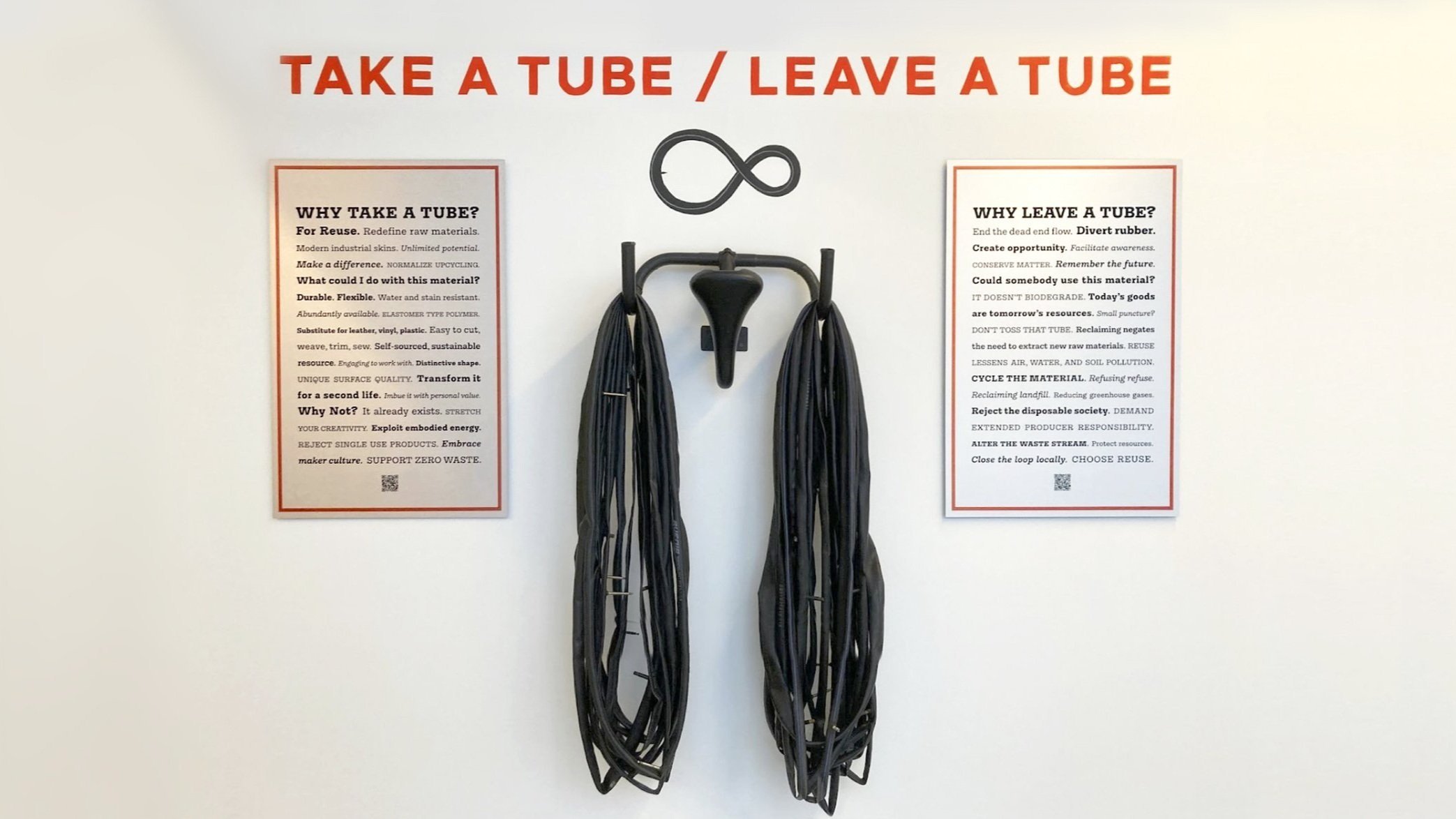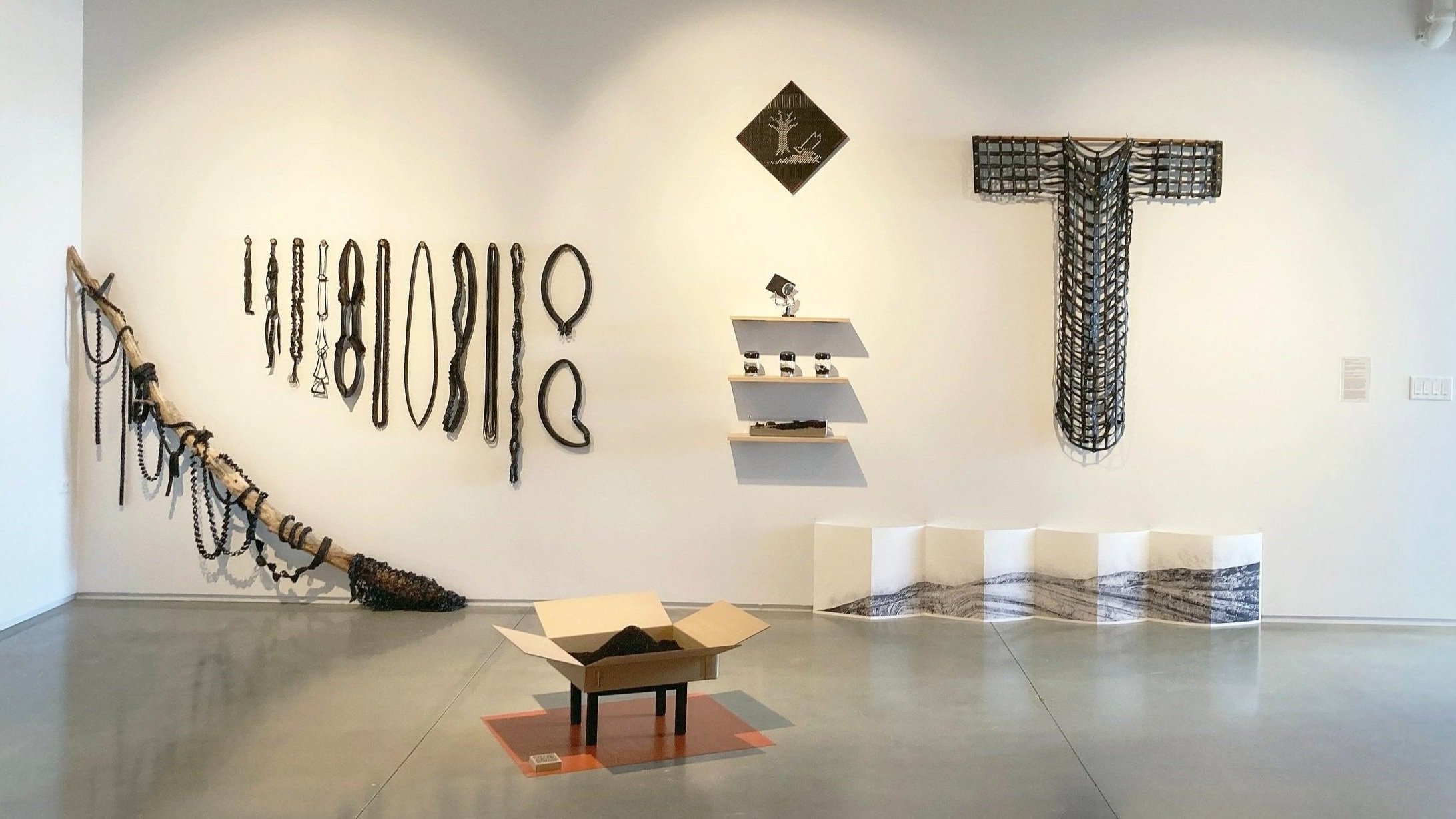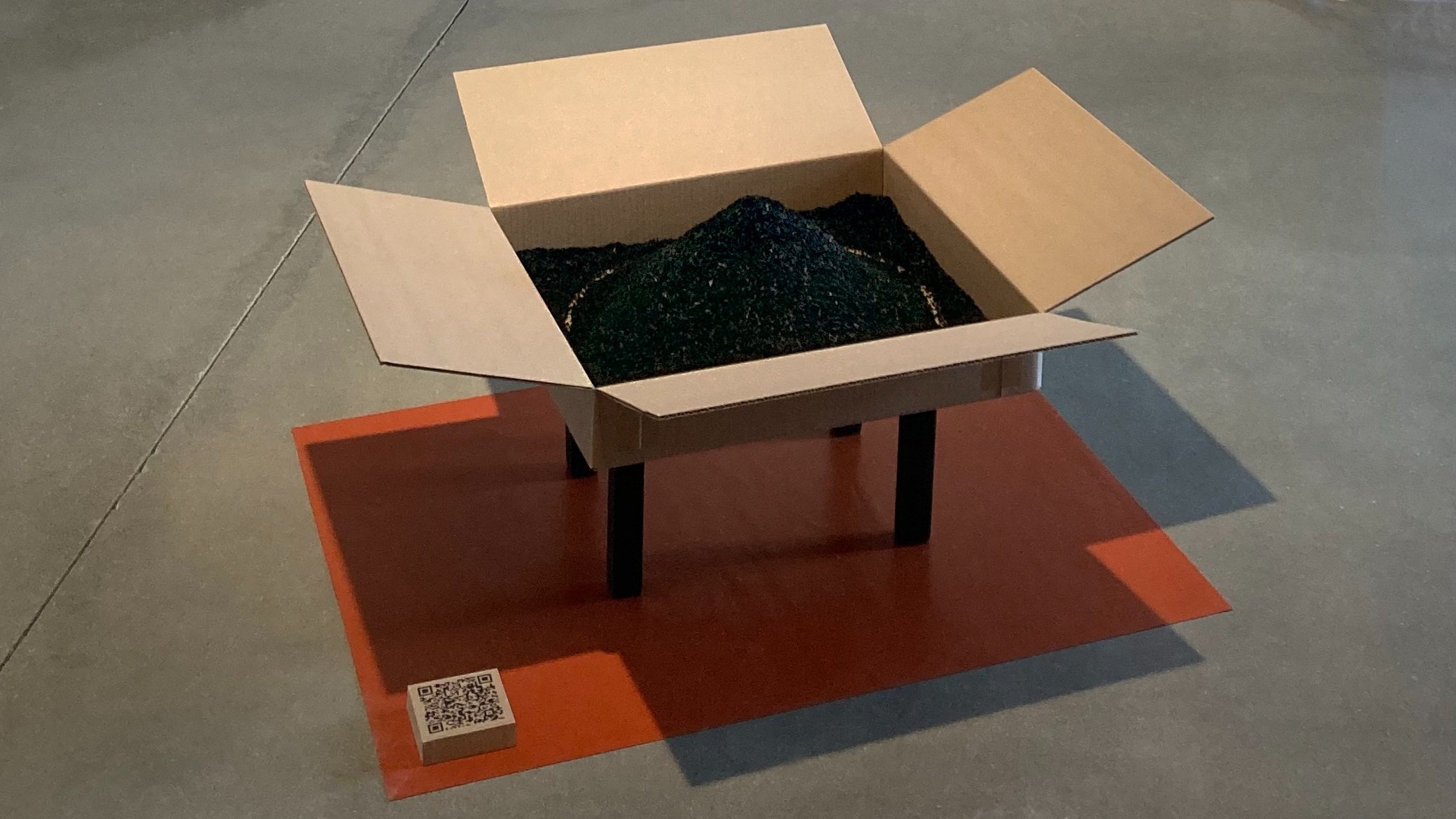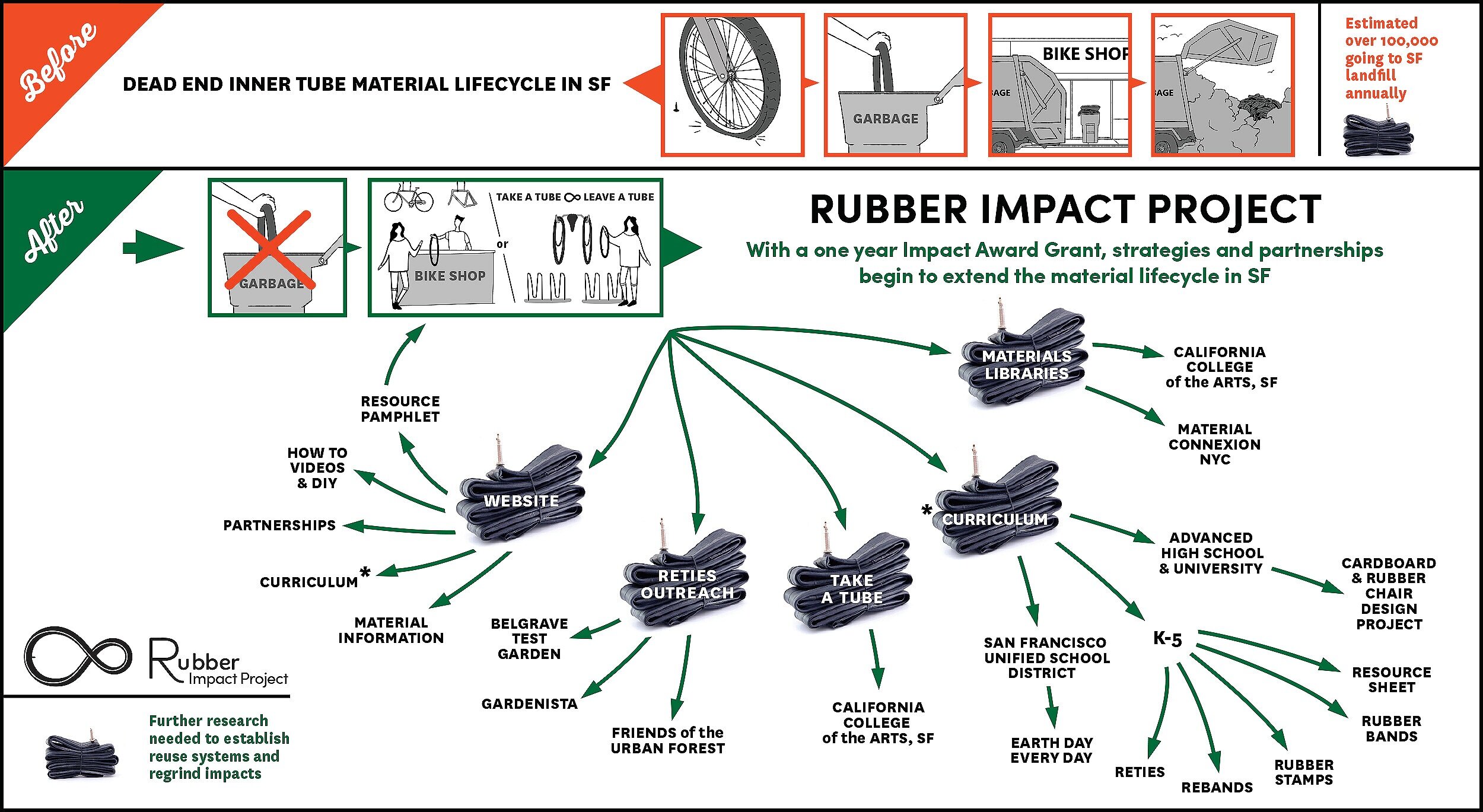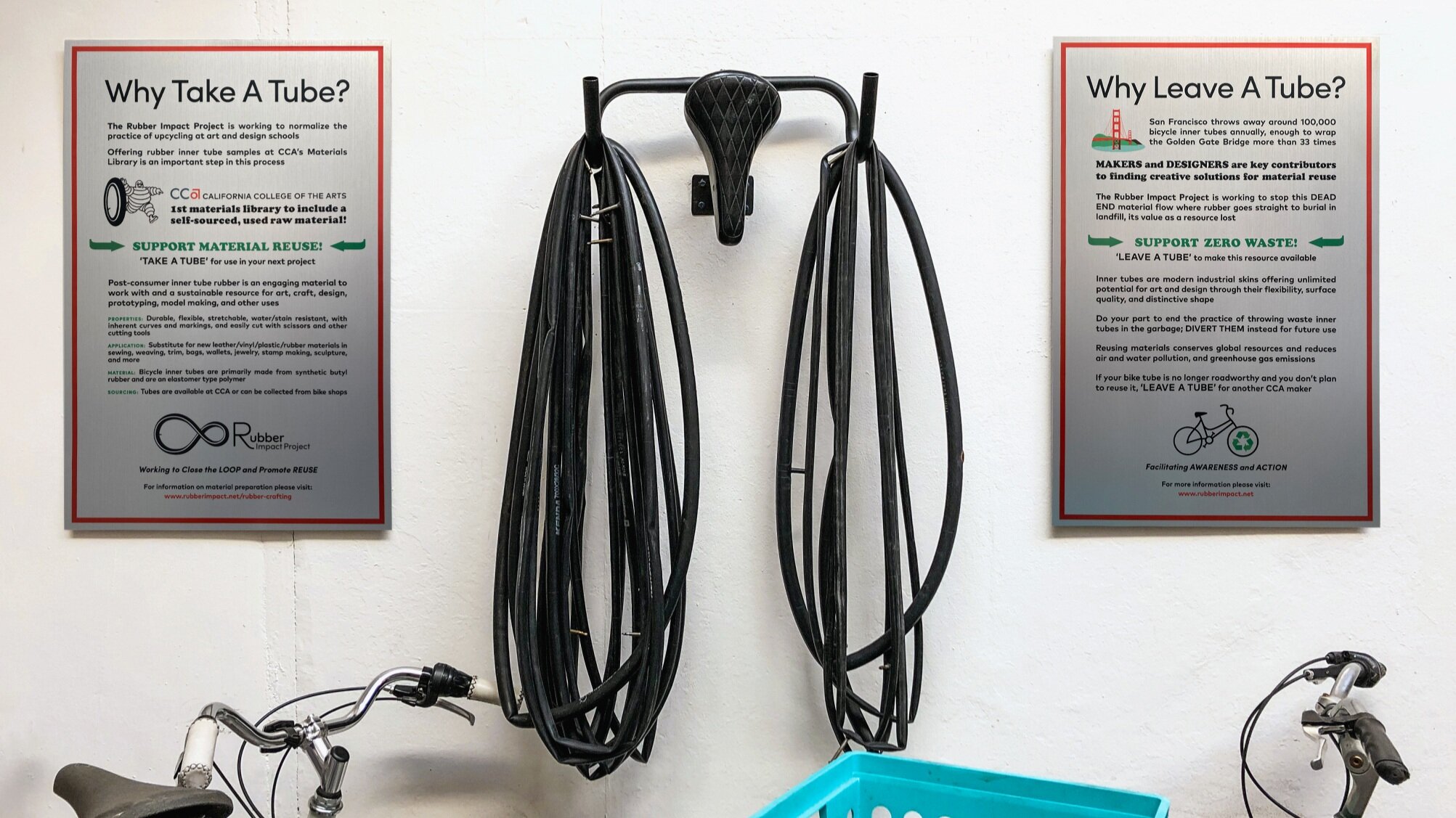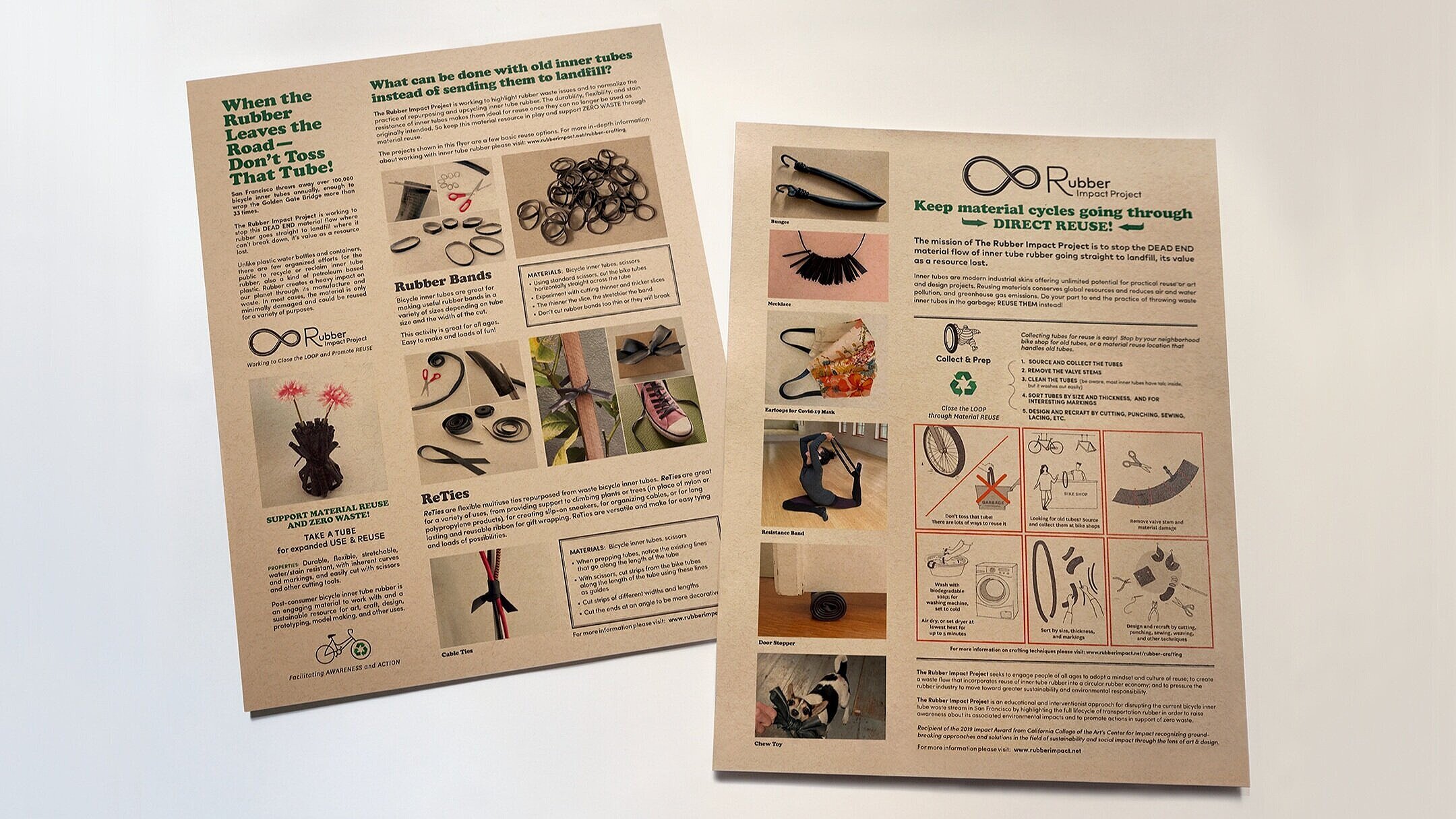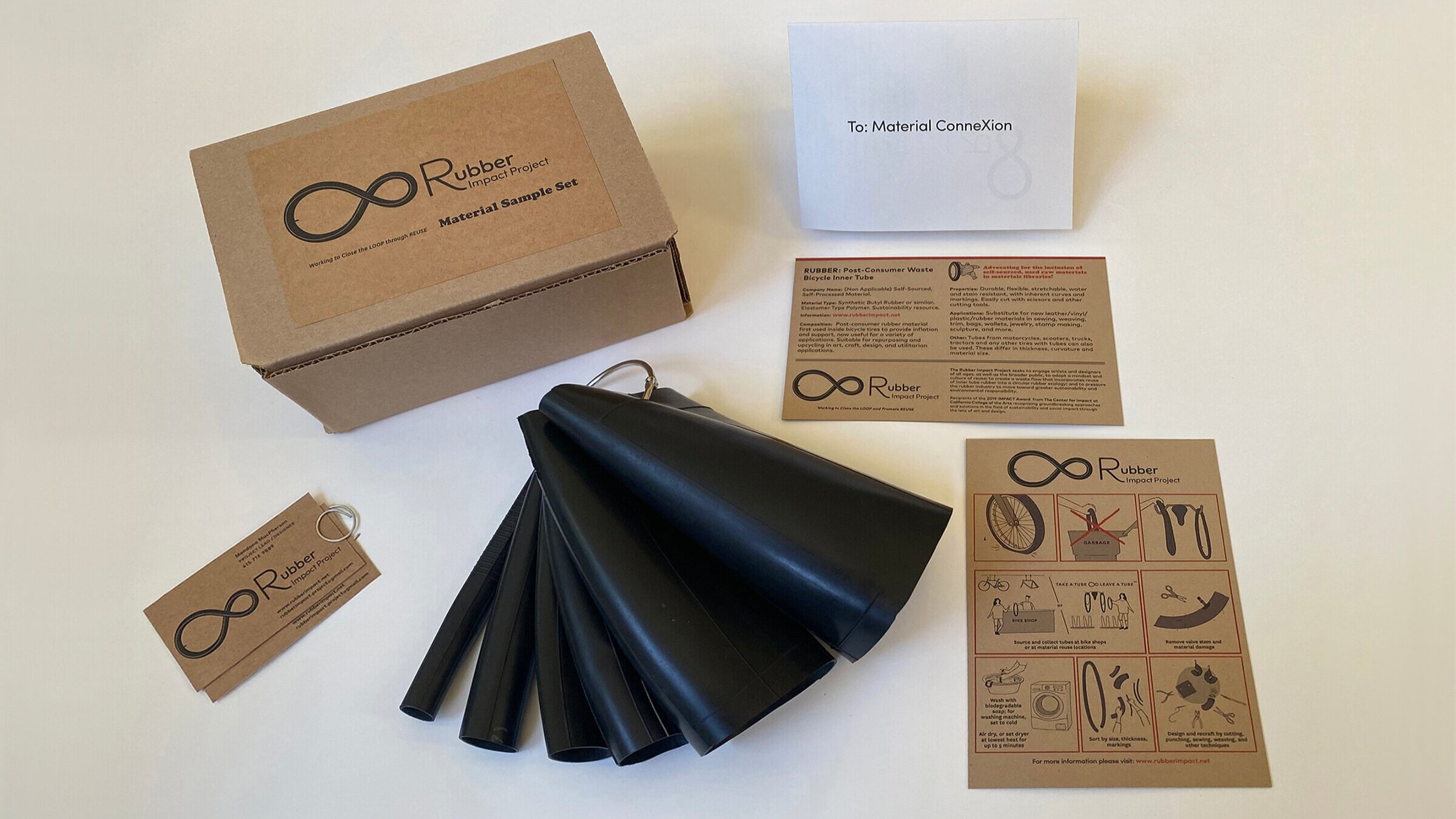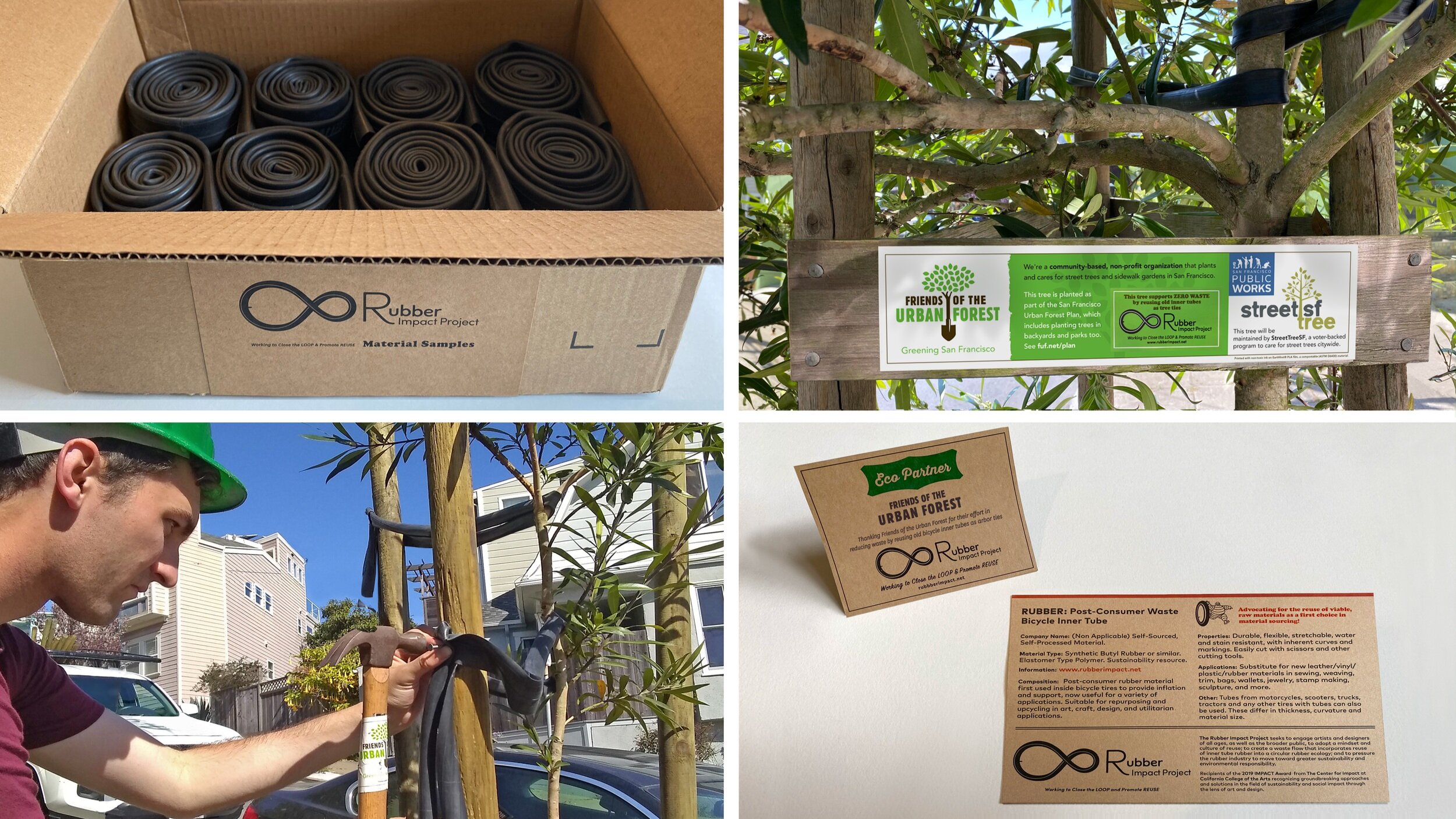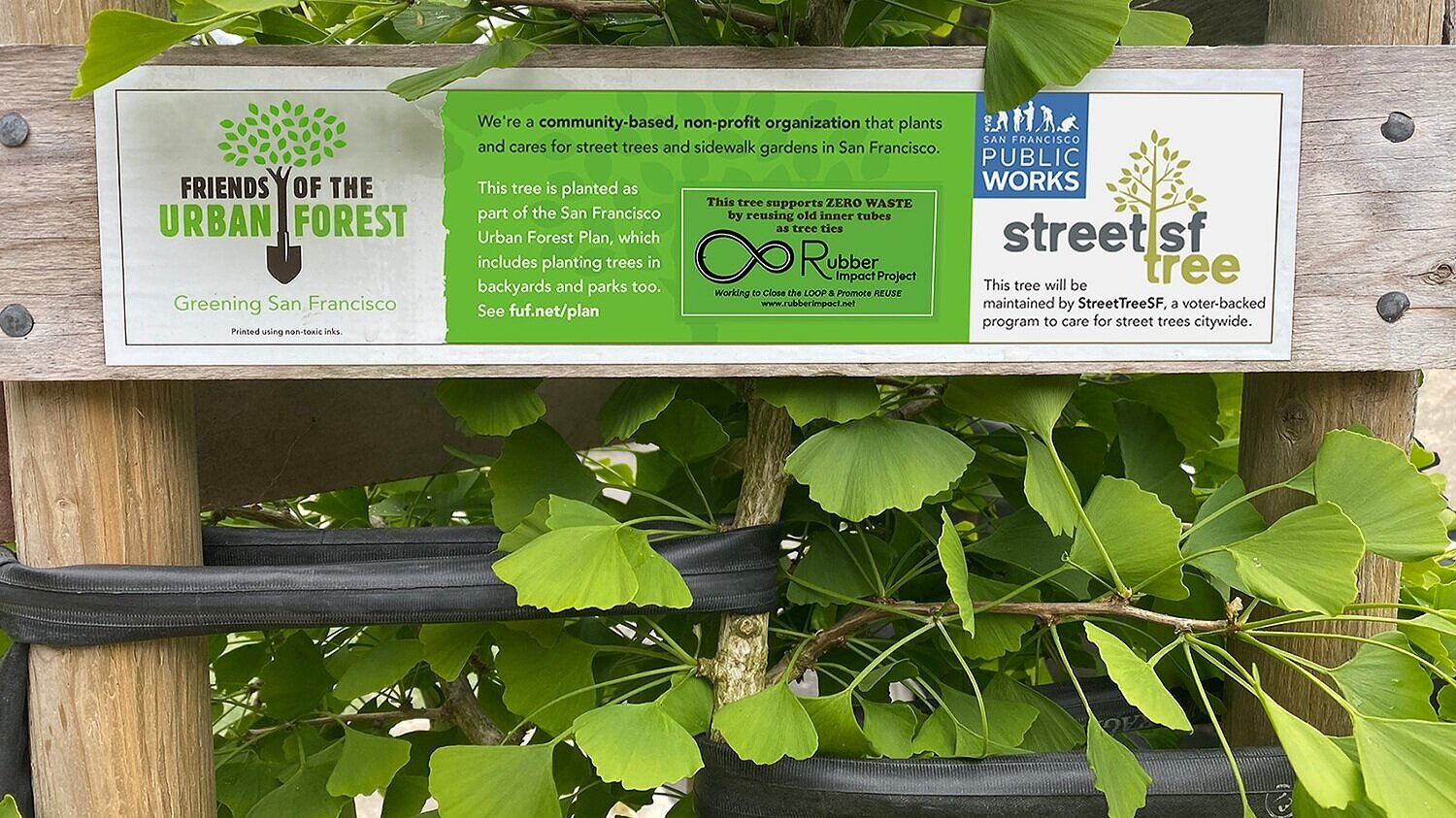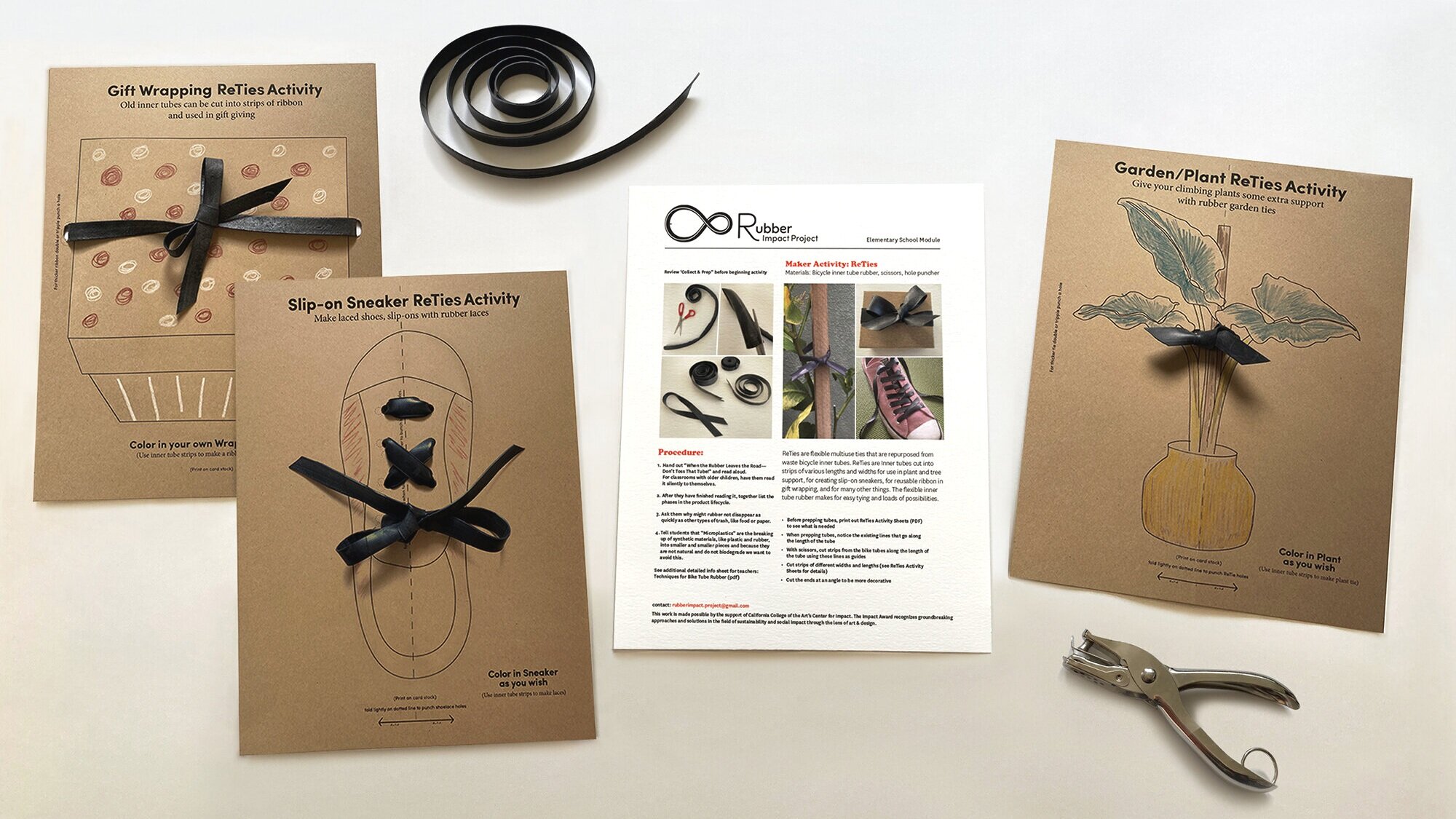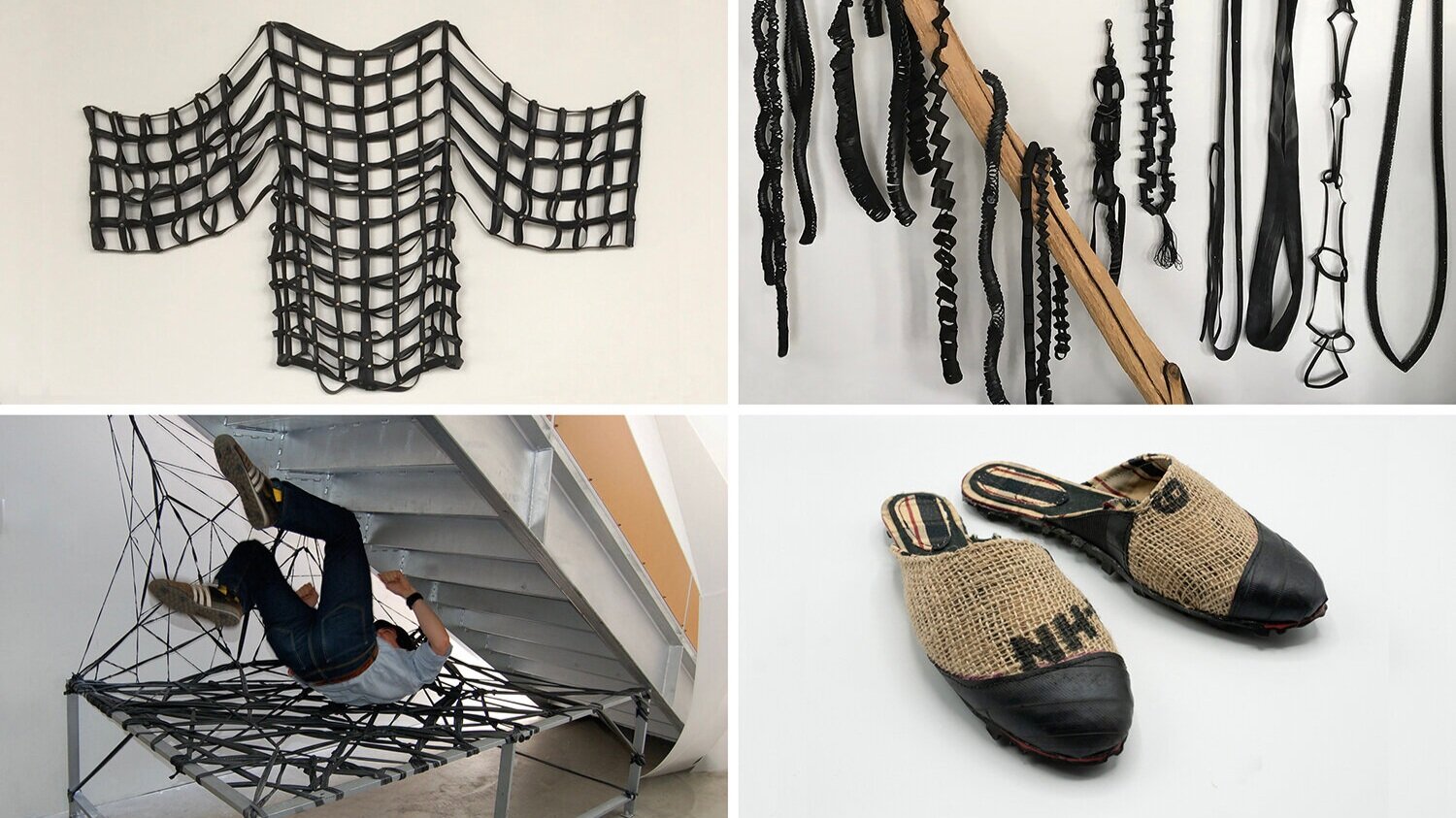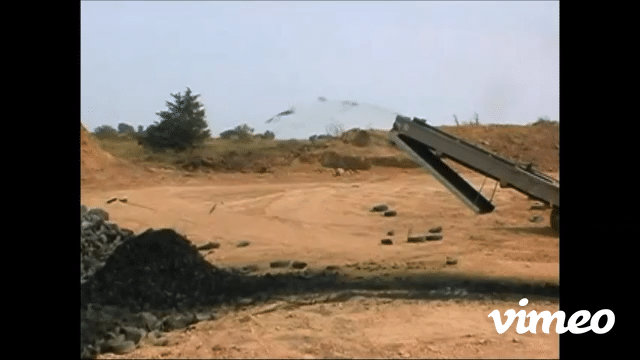Working to Promote Material Sustainability
through Awareness and Action
The Rubber Impact Project uses an educational and interventionist approach in addressing transportation rubber issues. The project engages across the full lifecycle of inner tubes and tires, acknowledging the complexity of issues that surround their use, in order to raise awareness about rubber’s environmental and human impacts and to promote actions in support of zero waste.
The goal is to shift the public’s mindset towards a culture of appropriate upcycling and reuse; to disrupt the current bicycle inner tube waste stream in favor of a waste flow that keeps inner tubes and tires in a circular rubber economy; and to pressure the transportation rubber industry to move toward greater material sustainability.
Recipients of the 2019 Impact Award and Fellowship from California College of the Arts Center for Impact
Material ConneXion, included RIP’s waste inner tube rubber sample set in their New York City library, the largest library of innovative, sustainable materials. This was the first inclusion of a self sourced waste material and further legitimized self-sourcing for direct reuse.
Click to view Material Catalog
The Rubber Impact Project is a collaboration between Mandana MacPherson and Gigi Obrecht. Our work has been presented at sustainability conferences, longlisted for the International Dezeen Design Awards, installed on college campuses, included in SFUSD curricular offerings, and exhibited at the Center for Maine Contemporary Art.
-Click to enlarge Flow Chart Infographic
-10 minute video slideshow presented at the 2021 On Sustainability Research Network’s International Academic Conference in Amsterdam
Infographic: Inner Tube Lifecycle for a Circular Transportation Rubber Economy



